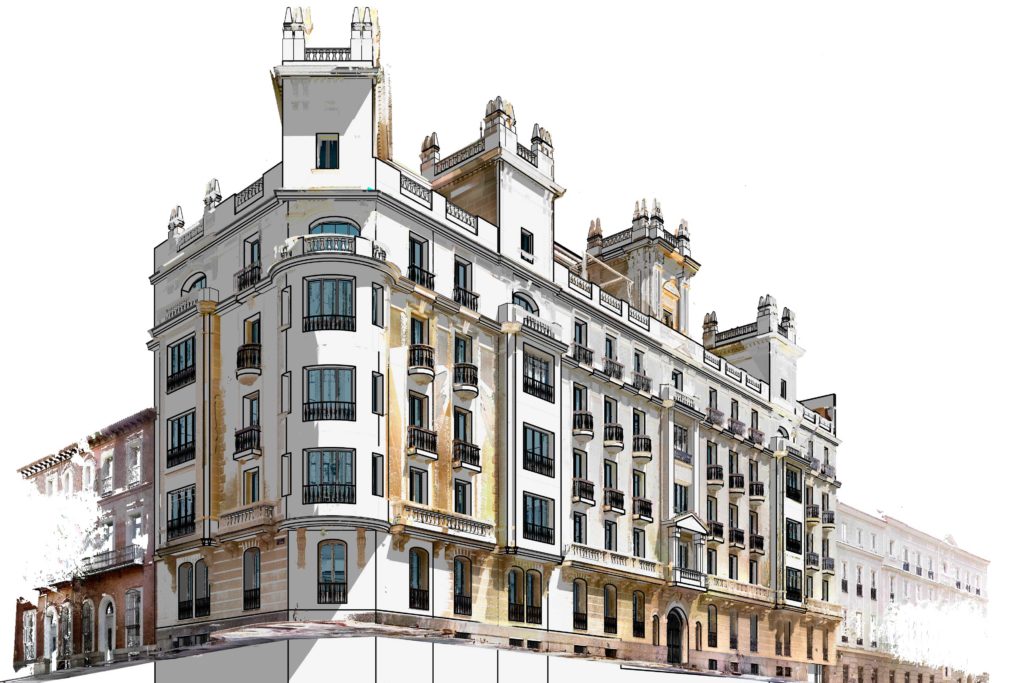BIM is changing the way people in the AEC (Architecture, Engineering and Construction) industry are working.
It is a collaborative work methodology that integrates all the parties involved in the building process and centralises all the information in a digital model.
BIM is a powerful engine of transformation that, combined with other industry trends, leads to significant changes and improvements in the value chain. Therefore, at Construcía our objective is to implement this disruptive technology to improve the Lean2Cradle® asset development process.
Lean2Cradle® is the tool in which we combine the Lean Construction methodology and implement the Cradle to Cradle principles, which focus on the health of users and materials, as well as the cyclability of the products installed in the building. With Lean2Cradle®, we build spaces while staying on budget and meeting deadlines, we create healthy and profitable buildings over time, and we do not generate waste because the materials’ life-cycle doesn’t come to an end when the building ends its useful life.
As a result, the need arises to record and concentrate all information in one place, which thus exponentially improves the forecasting ability of all the parties involved in a building process. This is where BIM technology comes into play.
5 Advantages of Applying BIM
- Collaborative work: it allows multidisciplinary work to be done through a single platform where information is shared in real time. This two-way communication also improves the transparency of the project.
- Efficient and sustainable building: it allows us to determine the energy impact of the materials used.
- Savings and efficiency: it automatically generates all project documentation, such as budgets, planning, structures… thus reducing costs and time.
- Minimisation of errors: much more comprehensive and reliable information is generated that allows us to analyse if there is a problem and solve it quickly. BIM gives us a great opportunity to reduce uncertainties that usually appear in the design and construction phases, such as the common deviations in existing deadlines, costs and specifications.

According to the UK Building Information Modelling Task Group: “BIM is essentially value creating collaboration through the entire life-cycle of an asset, underpinned by the creation, collation and exchange of shared 3D models and intelligent, structured data attached to them.”
BIM provides long-lasting data and its presence begins with the design phase, being included also in the construction phase and with its use extending throughout the entire building life cycle. With the development of our Lean2Cradle® methodology, we’ve sought out a transparent work protocol based on the participation of the project’s different members, facilitating interoperability and the flow of information. Thanks to BIM technology and its digital transformation processes, we manage to store and improve this flow of information, which can also be updated over time.
BIM Technology and the Material Passport
The Material Passport is the tool that allows us to identify, quantify and locate the different materials and products found in the building, in addition to assessing how healthy they are and how they will be recirculated in the future. It is a necessary part of our Lean2Cradle® methodology, since it provides us with the residual value of the materials used and tells us if they can be returned to the earth in the form of nutrients, completing their biological cycle, or reused in industry, completing the technical cycle.
Digital transformation allows us to store data about the life cycles of the materials and enables us to gain access to this information right when materials have to be removed or reprocessed.
In the projects where we apply the Lean2Cradle® methodology, where collaborative management is essential, the digital transformation process is greatly benefited by the use of tools such as BIM. An example of this is the Socrates building, where BIM offered the necessary platform for an open workflow, in addition to introducing the basic parameters of circularity with which the healthiness of the building is also measured.
You want to know more?

Subscribe to our newsletter to know more about us









